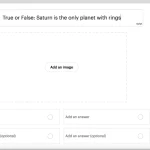Last Updated on 02/09/2023 by James Barron
Abstract
This comprehensive discussion explores the concept, implementation, benefits, and challenges of Individual Learning Plans (ILP) in classroom settings. The ILP, tailored from initial and diagnostic assessments, provides a unique learning path for each student, considering their strengths, needs, and aspirations. While ILPs offer customisation and flexibility in instruction, enhancing student engagement, there are inherent challenges. These include the time-intensive nature of creating ILPs and potential risks of over-individualisation. Effective ILPs require consistent updates, SMART target setting, and collaboration between educators and students. The overarching objective remains to ensure that students achieve their best while maintaining the integrity of the qualification.
Introduction
In some classes, it is common to create Individual Learning Plans (ILP) with individual learning goals for each student based on initial and diagnostic assessment. Initial assessment may include an assessment of their English and Maths. This may go into their ILP in order to decide which group they should be in, whether they need additional Maths and English lessons, and if there are any additional support requirements.
Diagnostic Assessment and Student Needs
A diagnostic assessment should be performed in which their current level of skill, knowledge, ability, and understanding are assessed. This provides a baseline for each learner that will demonstrate the students’ strengths and weaknesses within the subject. It highlights gaps in their understanding and allows teaching to be targeted to specific required areas.
Tailoring Course Materials to Individual Needs
This is the ideal opportunity to discuss with the student what they hope to achieve. By recording these individual learning goals within an ILP, it may be possible to tailor some of the course material directly to that student. For example, the removal of any optional elements or removal/replacement of specific units that will be particularly challenging for this student. This approach works well with Level 1 and 2 classes. However, for Level 3 and above, the majority of the students within the class will be working towards the same goal of completing the qualification.
Effective Application of the ILP
An Individual Learning Plan is most effective when applied at an appropriate time, for example, if the student is falling behind, missing classes, or there is a different issue impacting the student’s ability to perform at the expected level. This is the best time to tailor and make adjustments to units and course material to suit this particular student. The remaining students continue as they are, but reasonable adjustments have been implemented to assist the student that is struggling. Such adjustments could be as simple as not requiring a presentation to be delivered to the entire group but only the assessor. Alternatively, professional discussions or observations can be used to the same effect.
Setting Targets and Reducing Student Stress
During the creation of the ILP, especially if the student is falling behind, it’s an ideal opportunity to set targets for the student to assist them in reaching their goal. It also highlights where they are in the course, potentially showing how much they have already achieved. This is also a good opportunity to implement extensions. This will reduce the stress levels the student is experiencing and make their workload more manageable.
Creating Student Targets
Formulating student targets within the framework of an Individual Learning Plan (ILP) demands a nuanced and systematic approach. Central to this process is a thorough diagnostic assessment, which offers insights into a student’s unique learning profile, capturing both their prowess and areas requiring bolstering. With this foundation, educators can sculpt targets that are not only aligned with the curriculum but also tailored to the individual’s aspirations and needs. It is paramount that these targets adhere to the SMART criteria, ensuring that they are concise, quantifiable, and within reach, yet sufficiently challenging. To fortify the sense of ownership and commitment, involving the student in the target-setting phase is of essence. This collaboration fosters a deeper connection to the learning goals. Breaking these goals into manageable sub-targets can further ease the student’s progression, offering a clear trajectory and opportunities for acknowledging incremental successes. Periodic reviews embedded within the ILP ensure dynamic adaptability, allowing for recalibration based on evolving student capabilities. It’s also beneficial to remember that while academic progression remains vital, targets promoting personal growth and holistic development enrich the ILP. Supporting these targets with curated resources and consistent feedback underpins the roadmap to academic and personal fruition.
Benefits of Individual Learning Plans (ILP)
The benefits of utilising Individual Learning Plans (ILP) in an educational setting are manifold. Firstly, they offer a personalised roadmap tailored to the unique needs and strengths of each student, ensuring that learning experiences are relevant and meaningful. This customisation fosters greater student engagement and motivation, as learners can clearly see the connection between their personal goals and the course content. Furthermore, ILPs act as a powerful tool for educators to monitor progress and provide timely feedback. They enable educators to identify potential areas of struggle early on, facilitating proactive interventions. This leads to a more efficient use of classroom time, as lessons can be adjusted based on individual progress, rather than adhering to a one-size-fits-all approach. Additionally, by involving students in the creation and review of their ILPs, students develop ownership of their learning journey, promoting responsibility and self-regulation. Overall, the implementation of Individual Learning Plans not only supports academic achievement but also nurtures essential life skills, preparing students for success beyond the classroom.
Challenges of Individual Learning Plans (ILP)
While Individual Learning Plans (ILP) bring numerous advantages, they also come with certain challenges that educators must be aware of. Firstly, the creation and maintenance of ILPs for every student can be time-consuming, potentially diverting valuable time from instruction and other essential educational tasks. This added workload can be particularly taxing for educators with larger class sizes. Furthermore, there’s a risk of over-individualisation, where the collective learning experience gets fragmented, potentially leading to a lack of cohesion in group or classroom activities. There might also be instances where students, due to their tailored curriculum, miss out on broader, universally beneficial content. Additionally, if not carefully managed, ILPs could lead to some students feeling singled out or labelled based on their specific needs or goals. From an administrative perspective, ensuring consistency in ILP standards and execution across multiple educators can be challenging, potentially resulting in disparities in student experiences. Lastly, without the proper resources, training, and support, educators might find it challenging to effectively implement and adapt ILPs, thereby negating their potential benefits.
Overall Objective of the ILP
The overall goal of an Individual Learning Plan is to assist students so that they can achieve their best without changing the course so much that it questions the validity of the qualification.
Further Reading
Differentiated Instructional Strategies: One Size Doesn’t Fit All by Gayle H. Gregory and Carolyn Chapman.
A detailed guide to differentiated instruction, providing practical strategies for teachers to cater to individual learning needs.
Designing Personalized Learning for Every Student by Dianne Ferguson
Offers insight into creating individualised instructional plans, making the content relatable for each student.
How to Create and Use Rubrics for Formative Assessment and Grading by Susan M. Brookhart.
While it focuses on rubrics, this book provides insights into assessment, which is crucial for creating effective ILPs.
Learning Forward (formerly National Staff Development Council)
This site provides resources, strategies, and tools to drive effective professional learning and improved student outcomes.
Website: https://learningforward.org/
Understood
Focused primarily on students with learning and thinking differences, this site provides a plethora of resources on individualised education programs, differentiated instruction, and more.
Website: https://www.understood.org/
CAST: Center for Applied Special Technology
CAST is dedicated to Universal Design for Learning (UDL), a framework to improve and optimise teaching and learning for all people based on scientific insights into how humans learn.
Website: https://www.cast.org/
Author Profile
-
My first experience of teaching was in 2016, when I was asked to
deliver a talk to a group of 16-year-olds on what it was like to start
your own business. I immediately knew I wanted to become more
involved in teaching but I didn’t know where to start as I had not
previously considered a career in education. A few weeks later I
agreed to teach a class of Chinese students from the Shanghai
Technical Institute of Electronics and Information, who had travelled
to the UK to learn English and Software Engineering, after that I was
hooked. Within the next few years, I taught hundreds of students of
many different nationalities, aged from 16 to 60, and from
levels 2 to 6. I focused my time teaching with Bath University and
Bath College for several more years until I felt a change was in order.
For the last few years, I have taught remotely with several private
training organisations, provided dedicated one to one coaching
sessions, provided consultancy on teaching and assessment practices
and written about my experiences as a teacher. I plan to continue
with my current activities for the foreseeable future but I’m always
open to new teaching experiences.




